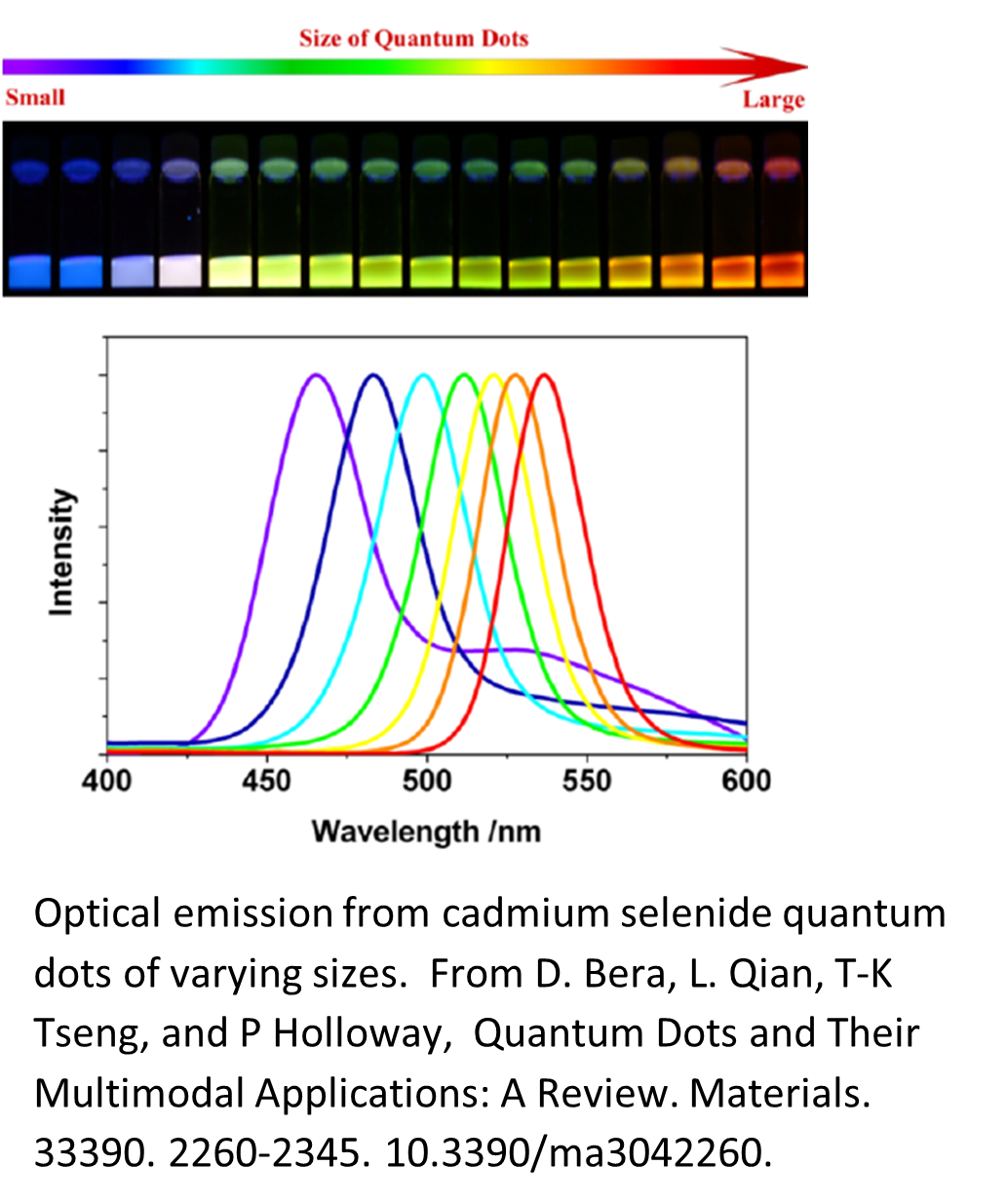This year’s Nobel Prizes for Physics and Chemistry were awarded for pioneering work on electron-light interactions at the attosecond timescale and on quantum dots respectively. Whereas attosecond physics involves technically challenging experiments at the fundamental level, quantum dots, which are approximately spherical particles 2-20 nm in diameter, have many applications in displays, solar cells, catalysis, medical imaging and quantum computing. In order to harness quantum dots effectively for applications, control of size, composition and electronic properties is crucial.

The diagram shows the optical emission from quantum dots of varying size, the resulting colours being easily predicted from quantum mechanics. Complex colouration arising from 3-dimensional structures on the 100 nm-scale is observed throughout living organisms, such as peacock feathers, butterflies and edelweiss flowers as well as some beetles, marine worms and jellyfish.
The degree of control that is attained in the basic processes of living cells has been well-captured in animations created by Drew Berry, an Australian biochemist who produced accurate video representations of DNA storage, replication and translation processes. For biochemists and molecular biologists, it’s an opportunity to watch familiar processes. For chemists and physicists, it provides an opportunity to wonder at the subtle molecular processes that occur continuously in our bodies. For example, around 4 mm of DNA is replicated in each of our cells each second. When summed over our 1013 cells, this corresponds to a total length of DNA copied each second that would stretch around the earth at an error rate of 1 in 10^8 - 1 in 10^9, parallel processing at a scale that would be the envy of any computer scientist!
As described towards the end of the video, proteins are made from the digital code embodied in our DNA, translating from base-4 to base-20 within the ribosome, a complex consisting of over two million atoms. It is the resulting precise sequence of amino acids along a protein backbone, determined by the code on DNA, that enables the various functions that different proteins carry out in the cell.
The formation of specific sequences determined from the DNA code contrasts with the way chemists synthesise a specific organic compound. They employ reactions that generate a range of different products, followed by painstaking purification steps to eliminate unwanted material – life doesn’t have that luxury! In the cell, molecules interact with weak forces that are easily shaken apart by random Brownian motion. This enables molecules to be brought together and to be released in a controlled way by subtle changes of the molecule’s shape, as seen in the processes portrayed in Berry’s video.
Having collaborated with physicists and organic chemists who develop polymer-based solar cells and transistors, I have the pleasure of comparing synthetic systems with processes that involve complexes of macromolecules in living cells. For example, we see some common features in polymer-based solar cells and in photosynthesis. Yet, photosynthesis is more advanced, not simply harnessing energy from the sun but also continually replenishing oxygen in our atmosphere. The chemistry and the nanoscale control involved in quantum dots also appears primitive in comparison.
Both the intricacy of life at the molecular level, too small for the human eye to see, and the images of the furthest reaches of the universe from recently developed space telescopes declare the glory of our God whom we worship.
Questions for reflection:
- What does the complexity and significance of processes happening at such a tiny scale suggest about God? What does it suggest about us as human beings in comparison?
- How does your own field of study declare the glory of God and draw you to worship?

